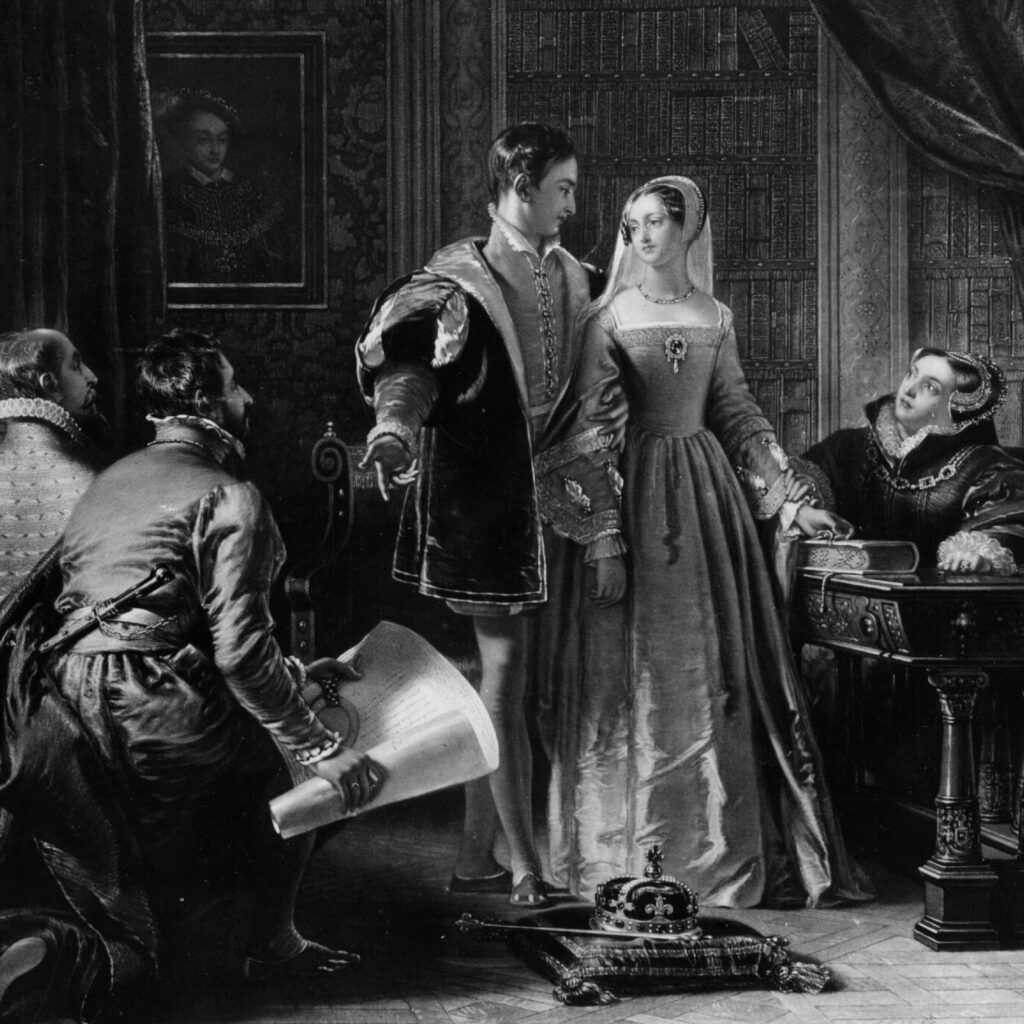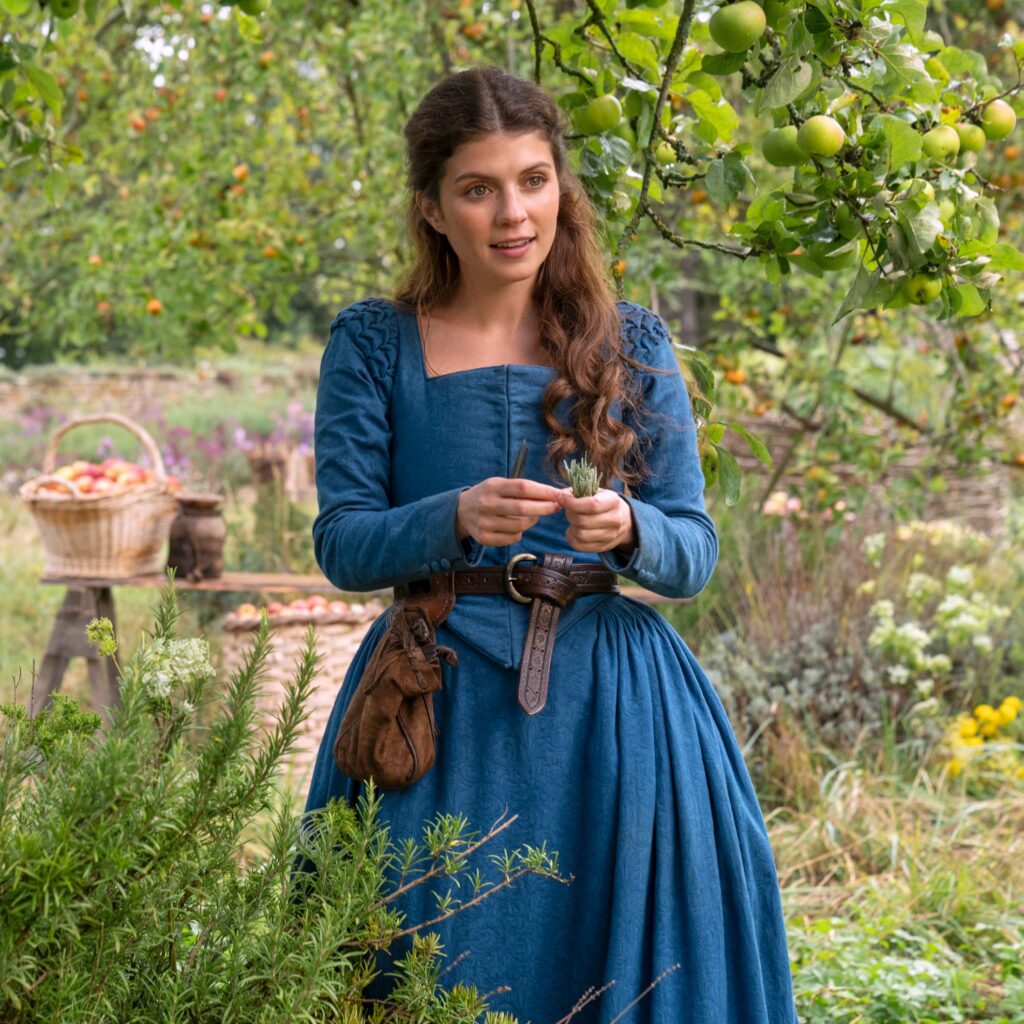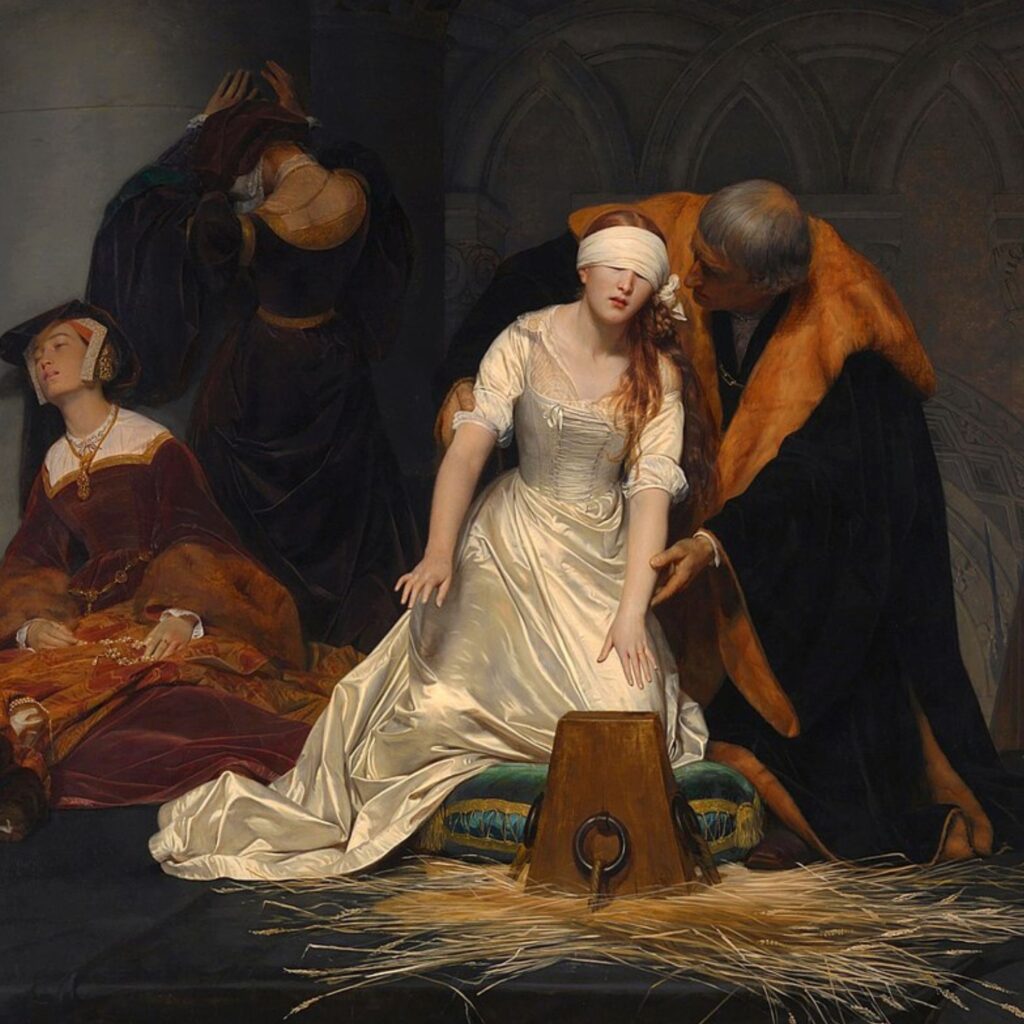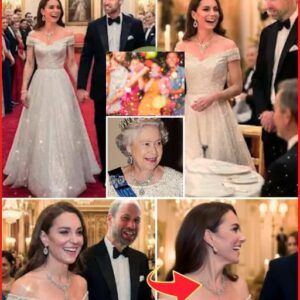Everything you need to know about “The Nine Day Queen”
 Getty/Print Collector/Amazon Prime
Getty/Print Collector/Amazon Prime
Asides
Amazon Prime Video’s new drama series My Lady Jane has been described as a “romantacy”, reimagining the reign of Lady Jane Grey, England’s shortest-serving monarch.
The series is a romantic drama and “radical retelling” of the story of Lady Jane Grey that puts a light-hearted spin on the story of one of England’s most unfortunate queens. It’s whimsical, fun and blends fact, fiction, history and fantasy with a healthy dose of sex. Unsurprisingly, it’s been soothing the broken hearts of those who’ve finished binge-watching Bridgerton and are looking for another historical romp. But is My Lady Jane a true story?
Partially. At its heart, My Lady Jane asks, “What if the history of England’s least fortunate teen queen was different?” and delves into an alternative fantasy world where people can transform into animals, and teen queens hang onto their heads.
But what were the historical facts?
It turns out that while the series takes inspiration from the story of Lady Jane Grey, the facts are far bloodier than the fiction.
The True Story of Lady Jane Grey

Lady Jane Grey was just sixteen when she ascended the throne of England following the death of King Edward VI, son of Henry VIII.
She was the great-great-granddaughter of Henry VII and the eldest daughter of Henry Grey, Duke of Suffolk. Considered beautiful, she was also highly intelligent. Grey studied Latin, Greek and Hebrew and was fluent in French and Italian. Deeply religious and passionate about theology and philosophy, she preferred reading over hunting and other commonly favoured noble pastimes. Allegedly, when asked why she wasn’t playing outdoors with friends, she responded, “I wish all their sport in the park is but a shadow to the pleasure I find in Plato.” So, a little eccentric.
In 1553, Jane married Gilford Dudley, the son of John Dudley, Duke of Northumberland. Like many arranged noble marriages, the alliance was made to strengthen the Dudleys’ proximity to royalty. Her husband’s father was highly ambitious, Lady Jane Grey suspicious. According to Historian Nicola Tallis, author of Crown of Blood: The Deathly Inheritance of Lady Jane Grey, Grey and her mother had reservations about the marriage.

How Did Lady Jane Grey Become Queen?
Grey was far from an obvious choice for the throne. She had a longstanding power struggle between Protestants and Catholics to thank (or blame) for her ascension.
When her cousin King Edward VI died, she was actually fifth in line – Edward had two half-sisters. Mary Tudor, daughter of Henry VIII’s first wife Catherine of Aragon, and Elizabeth Tudor, daughter of his second wife Anne Boleyn (another ill-fated queen).
Henry VIII had formally broken with the Catholic church to enable his divorce from Catherine of Aragon, but frustrated Protestants with his ambivalence towards the faith. Throughout his reign Protestants and Catholics fought for favour, their successes often depending on the leanings of his many queens.
Edward VII’s mother, Jane Seymour, who died 12 days after he was born, was a protestant, as were her family. Given Edward was only nine years old when he became king, he leant on his uncles and extended family for guidance and the Protestant faith became the dominant religion at court, and in England.
In 1552, Edward VI contracted tuberculosis, and by 1553, it was clear the young king, only 15, would die. This placed his staunchly Protestant advisors in a predicament. Mary, Edwards’s oldest sister, was the natural heir to the throne but an avid Catholic. His second sister, Elizabeth, was protestant but had been declared illegitimate when her mother, Anne Boleyn, was beheaded for adultery and witchcraft (another Tudor Queen who got something of a raw deal).
Under pressure from his advisors, including the Dudleys, an ailing Edward bypassed his sisters and named Lady Jane Grey his successor.
 (Credit: Getty/National Gallery of London) The Execution of Lady Jane Grey by Paul Delaroche, 1833
(Credit: Getty/National Gallery of London) The Execution of Lady Jane Grey by Paul Delaroche, 1833
What Happened to Lady Jane Grey
Mary Tudor was the only legitimate heir to the throne of England and had public support and the support of many at court.
Her mother, Catherine of Aragon, had been divorced by Henry VIII in 1533, an event that caused enormous scandal. Many Englishmen believed the king’s subsequent marriages illegitimate. She was also the “rightful heir” following her brother, as stated in her late father’s will. On July 19, 1553, Mary Tudor claimed the throne and imprisoned Jane and her husband in The Tower of London. Jane was in the Tower for just under seven months, and initially, it seemed Jane, who was viewed by most as a pawn in a broader plot, might be spared her life. But her father became entangled in rebellions against Mary Tudor. On February 12 1554, she and her husband Guilford were executed for treason. Jane allegedly met her death bravely, asking the executioner, “Please, dispatch me quickly.” 
How Much Fact is in My Lady Jane?
Like many series that deal with history, My Lady Jane is, at its heart, a fantasy series and it takes plenty of liberties with historical fact.
While there is a recap of Edward VI’s death and Jane’s coronation, the series imagines a more romantic and less bloody ending for Lady Jane Grey. It weaves elements of her real life, like her reluctant betrothal, with romantic fantasy (she eventually falls in love with her husband).
The greatest departure is in the representation of the war between Protestants and Catholics. In the series, this is given a magical twist, struggling between “Vertiies,” or regular humans, and “Ethians,” humans who can transform into animals. Jane’s husband, Guilford Dudley, is an Ethian who occasionally turns into a horse.
Is Lady My Lady Jane Grey based on a true story? Yes, but it takes small and large liberties. The real Guilford Dudley no doubt wished he had this skill trick up his sleeve when trying to dodge Mary Tudor’s guards.
Where To Watch My Lady Jane
If we had you at Bridgerton, My Lady Jane is available to stream exclusively on Amazon Prime Video. It premiered on June 27th, and all eight episodes have landed on the streaming platform. You can stream My Lady Jane on Prime for free with a 30-day free trial or for $9.99 per month.




